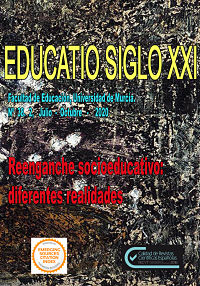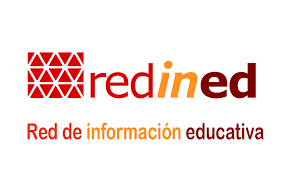Knocking down walls: on-screen reading and university teaching
Abstract
Introduction: In this study, the categories "paper reading", "screen reading" and "ways of reading" were analyzed through the words of teachers who belong to different disciplines and headquarters of the Universidad Nacional del Comahue (UNCo), Patagonia, Argentina. Method: For this study, part of a major investigation carried out within the framework of a doctoral thesis in Education, the constant comparative method was used, and qualitative data from semi-structured interviews with teachers, conducted during the 2014-2017 period, were analyzed. Objective: The main objective was to determine the representations of UNCo lectures regarding screen reading and their relationship with the task of teaching at university. Results: Concerning results, on the one hand, it was observed that the ratings on screen reading were different when the focus was shifted from the task of teaching to research. On the other hand, there were several changes in the ways of reading and teaching, although it was admitted that these do not always lead to profound transformations in education. Conclusion: The main conclusion was that, in certain situations, it seems that the so-called “new” technologies have demolished several walls, allowing for more extensive and open ways of teaching, but at the same time, it is noted that new walls have been erected, some of which only reproduce old pedagogical models.
Downloads
References
Bauman, Z. (2003). Modernidad líquida. Buenos Aires: Fondo de cultura económica.
Benhamou, F. (2015). El libro en la era digital. Buenos Aires, Barcelona, México: Paidós.
Fanese, G. (2012). Escritura fugitiva. Ensayo y política de género. Minelli, M. y Fanese, G. (Eds.) Representaciones y sujet*s. Discursos sociales y expresiones estéticas, (pp. 139-165). Córdoba, Argentina: Alción.
Foucault, M. (1986). Vigilar y castigar: nacimiento de la prisión. Madrid: Siglo XXI Editores.
García Aretio, L. (abril de 2007). Los docentes: Entre tecnófilos y tecnófobos. Obtenido de Boletín Electrónico de Noticias de Educación a Distancia (BENED). Editorial del BENED: https://www2.uned.es/catedraunesco-ead/pub_Garcia.htm
García, J. A. (enero-junio de 2016). La lectura digital y la formación del lector digital en España: la actividad de la Fundación Germán Sánchez Ruipérez y el Proyecto Territorio Ebook. Álabe, 13, 207-231.
Jodelet, D., y Moscovici, S. (1989). Folies et représentations sociales. Paris: Presses universitaires de France. Paris: Presses universitaires de France.
La Academie des Sciences. (2013). Lénfant et les ecrans. París: Le Pommier.
Meek, M. (2004). En torno a la cultura escrita. México: Fondo de Cultura Económica.
Moscovici, S. (1981). Representaciones sociales. Madrid: Universidad Complutense de Madrid.
Piscitelli, A. (2004). Tecnologías educativas: una letanía sin ton ni son. Signo y pensamiento, 23(44), 53-61.
Raiter, A., Sánchez, K. y Zullo, J. (2002). Representaciones sociales. Buenos Aires: Eudeba.
Sennett, R. (2009). El artesano. (M. A. Galmarini, Trad.) Barcelona: Editorial Anagrama.
Sibilia, P. (2012). ¿Redes o paredes? La escuela en tiempos de dispersión. Ciudad Autónoma de Buenos Aires: Tinta Fresca.
UNCo. (30 de octubre de 2018). Secretaría académica. Unidades académicas. Obtenido de http://www.uncoma.edu.ar/index.php/unidades-academicas/
Vygotsky, L. S. (1995). Pensamiento y lenguaje: teoría del desarrollo cultural de las funciones psíquicas. Buenos Aires: Fausto.
Original work publishes in this journal is subject to the following terms:
1. Murcia University Press (the publishing house) holds the copyright of the publishes work, and favours and allows their reutilization under the use license stated in point 2.
© Servicio de Publicaciones, Universidad de Murcia, 2015
2. Work is published in the electronic edition under a license (Creative Commons Reconocimiento-NoComercial-SinObraDerivada 4.0 España (legal text). They can be copied, used, disseminated, transmitted and publicly presented, as long as: i) authorship and original publication source is acknowledged (journal, publishing house and URL of the work); ii) are not used for commercial purposes; iii) the existence and specifications of this use license is stated.
3. Conditions for self-archive. Authors are allowed and encouraged to disseminate electronically the pre-pint (before review) and/or post-print (accepted for publication) versions of their work before their publication since that favours earlier circulation and dissemination resulting in an increased chance for the authors to be cited and for the work to reach a bigger share of the academic community. Colour: RoMEO: green.








